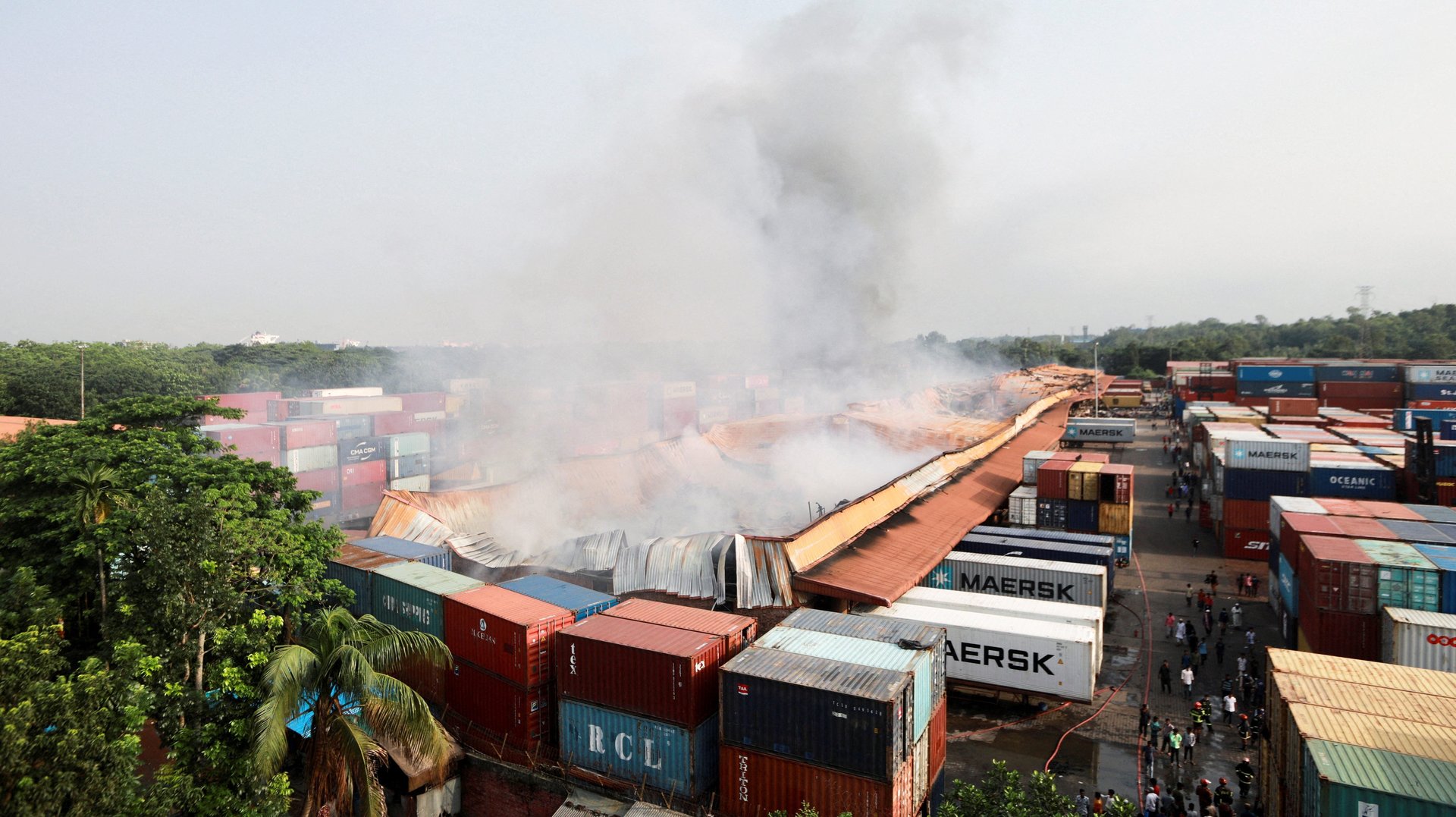Nearly a decade after the Rana Plaza collapse, Bangladesh is still one of the most dangerous countries for workers
A fire in a container facility set off a series of explosions on Saturday evening local time, killing at least 49 people in Bangladesh and injuring at least 150. The accident happened near Chattogram, Bangladesh’s main port.


A fire in a container facility set off a series of explosions on Saturday evening local time, killing at least 49 people in Bangladesh and injuring at least 150. The accident happened near Chattogram, Bangladesh’s main port.
The explosions, which involved containers including ones storing chemicals, caused casualties and damage to those living in the surroundings, which are densely populated. The army joined the local authorities in trying to extinguish the fire, while the injury count continues to rise. The authorities reportedly hadn’t immediately been able to reach the facility’s owners or any representatives, highlighting the lack of accountability surrounding industrial accidents in the country, which consistently ranks among the deadliest for workers.
The worst country to be a worker
According to the Global Right Index, a ranking by the International Trade Union Confederation based on parameters shared by the United Nation’s International Labor Organization (ILO) regarding workers rights and safety, Bangladesh is one of the world’s 10 worst countries to be a worker.
Almost a decade ago, after the Rana Plaza collapse in the outskirts of Dakha killed 1,134 people, international suppliers increased pressure on local manufacturers to provide workers with safe environments. Yet Bangladesh has barely improved its standing in matter of workplace safety. In 2021, more than 500 people died in the country in about 400 workplace accidents.
Despite some progress in the garment industry, overall efforts to make Bangladesh a safe country for workers have yet to show dramatic results. Workplace deaths actually went up over the past decade, along with the increase in the country’s industrial output, according to a report from ILO. In 2000, about 35,000 people lost their lives on the job in Bangladesh, or 27.6 per 100,000 people; in 2016, almost 50,000 did, or 31.2 per 100,000 people. The numbers of life years lost to workplace deaths went up from 2.1 million in 2000 to 2.6 million in 2016.